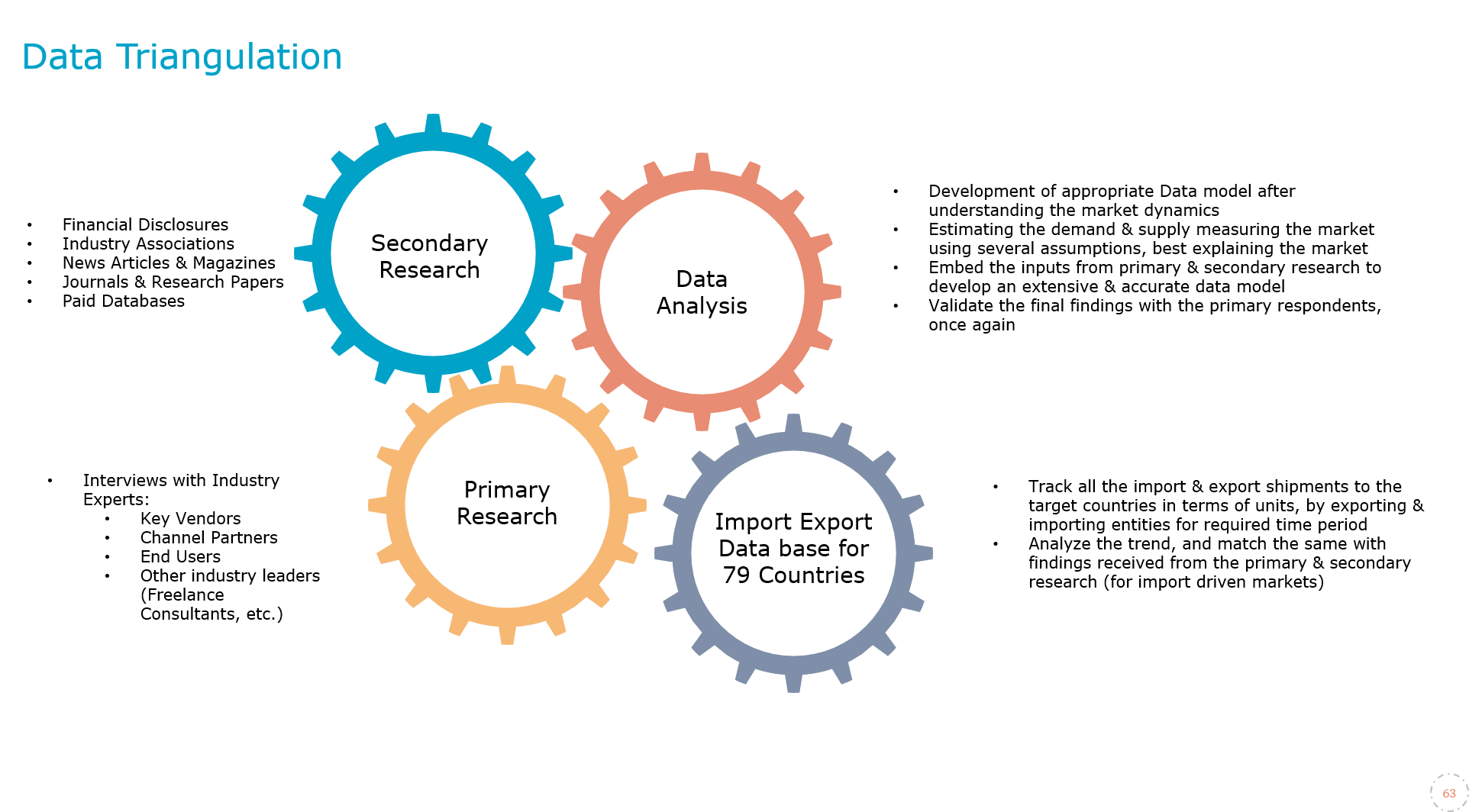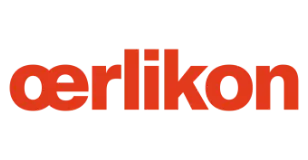
Global Smart Thermostat Market Research Report: Forecast (2021-2026)
By Technology (Wireless [Bluetooth, Wifi, ZigBee, Z-Wave], Wired), By Component (By Component [Sensor {Temperature Sensor, Motion Sensors, Humidity Sensors}, Display, Others), By E...nd-User (Residential, Industrial, Hospitality, Education, Office Building, Healthcare, Others (Retail)), By Region (North America, South America, Europe, Asia-Pacific, Middle East & Africa), By Country (US, Canada, Brazil, Germany, France, Spain, The UK, Russia, China, Japan, India, Australia, UAE, Saudi Arabia, South Africa), By Company (Emerson Electric Co., Nest Labs, GridPoint, Inc., Tado GmbH, Honeywell International, Computime Group Ltd., Schneider Electric SE, Radio Thermostat Company of America, Ecobee, Inc., Control4 Corporation, Carrier Corporation, Siemens AG, Johnson Controls, Zen Ecosystems, Resideo Technologies, Inc. etc.) Read more
- Energy
- Jan 2022
- Pages 182
- Report Format: PDF, Excel, PPT
Market Definition
A smart thermostat is a digitally programmable heating system that remotely controls the heating & cooling at homes. With the growing trend of smart homes, smart thermostats are becoming a critical part of the home comfort system. Through internet connectivity, consumers can regulate their cooling & heating temperature settings for energy conservation & better comfort. It has been made possible owing to the capability of smart thermostats to communicate with emerging virtual private assistants & learn with AI capabilities.
Market Insights
The Global Smart Thermostat Market is anticipated to grow at a CAGR of around 19% during the forecast period, i.e., 2021-26. The rapidly expanding residential & commercial buildings are leading to the increasing deployment of HVAC systems, which, in turn, is driving the Global Smart Thermostat Market. In addition, the surge in energy prices and escalating need for optimizing power to cut down energy bills are also projected to boost the market. For instance:
- Google’s Nest Learning thermostat saved around 10% to 12% on heating and 15% on cooling. Based on typical energy costs, the estimated average savings using this device are nearly $131- $145 a year.
| Report Coverage | Details |
|---|---|
| Study Period | Historical Data: 2016-19 |
| Base Year: 2020 | |
| Forecast Period: 2021-26 | |
| CAGR (2021-2026) | 19% |
| Regions Covered | North America: US, Canada |
| Europe: Germany, UK, France, Spain, Russia | |
| Asia-Pacific: China, India, Japan, Australia | |
| South America: Brazil | |
| Middle East & Africa: UAE, Saudi Arabia, South Africa | |
| Key Companies Profiled | Emerson Electric Co., Nest Labs, GridPoint, Inc., Tado GmbH, Honeywell International, Computime Group Ltd., Schneider Electric SE, Radio Thermostat Company of America, Ecobee, Inc., Control4 Corporation, Carrier Corporation, Siemens AG, Johnson Controls, Zen Ecosystems, Resideo Technologies, Inc., etc. |
| Unit Denominations | USD Million/Billion |
Furthermore, governments worldwide are encouraged to reduce energy wastage and use energy-saving devices, thereby driving the demand for smart thermostats. Besides, rising consumer awareness regarding efficiency & safety, coupled with advanced features of smart thermostats & the increasing disposable income, are expected to drive the market during 2021-26.
However, increasing price-based competition might hamper the overall market growth in the coming years. Nevertheless, the rising integration of advanced technologies like IoT & AI into smart thermostats is also fueling the overall market growth.
Impact of Covid-19 on the Global Smart Thermostat Market
The Covid-19 pandemic in 2020 brought unprecedented challenges to the Global Smart Thermostat Market. The market witnessed a significant decline in its growth due to the changing buying behavior of consumers. Even though the time spent at home amidst the pandemic was significantly high, people were more inclined towards buying essential goods rather than investing in smart devices. Hence, the dwindling interest in buying smart devices negatively influenced the growth of the Smart Thermostat Market amidst the pandemic.
Further, the lockdown imposed in the wake of the pandemic negatively impacted the production capacity of smart thermostats owing to the shutdown of manufacturing units. The market is highly dependent on China for hardware. However, China, the epicenter of the COVID-19 outbreak, adversely impacted the market's supply chain. Additionally, the US government increased tariffs on Chinese manufactured products, which created immense pressure on smart thermostat manufacturers who are dependent on China for hardware supply.

Market Segmentation
By End-User:
- Residential
- Industrial
- Hospitality
- Education
- Office Building
- Healthcare
- Others (Retail)
Of them all, the Residential sector dominates the Global Smart Thermostat Market. Smart thermostats are used widely in residential buildings for controlling air conditioning, ventilation, & heating. Smart thermostats comprise several advanced features like voice assistance support, remote room sensors, & integration with other smart devices. All these features are promoting the growth of the smart thermostat market around the residential sector.
The rising awareness among people regarding energy conservation & environmental protection is also propelling the demand for energy-efficient HVAC devices like smart thermostats in residential areas. Moreover, the rapid development of smart residential buildings, coupled with the increasing adoption of advanced technologies, is leading to the surging adoption of smart thermostats across the residential sector. In 2016, nearly 7.8 million smart thermostats were installed in US homes. And it was likely that around 43 million US residents would adopt the technology by 2021. Furthermore, favorable government regulations & tax credit facilities on the installation of HVAC systems and the mounting focus of people on reducing electricity bills are also contributing to the market growth around the residential sector.
Furthermore, the snowballing need for deploying smart thermostats across various industries, such as food and beverages, chemicals, etc., owing to the rising inclination toward energy & cost-savings and a comfortable ecosystem are the most prominent factors contributing to the increasing demand for smart thermostats across the industrial sector.
By Technology:
- Wireless
- Bluetooth
- Wi-Fi
- ZigBee
- Z-Wave
- Wired
Of them all, wireless thermostats are gaining immense popularity since they have greater control over heating. These are digital devices that can offer uninterrupted monitoring of the temperature regardless of their place of installation. Also, they provide accurate readings, which allows consumers to maintain the desired temperatures inside their houses. Moreover, factors like cost-effectiveness, less maintenance, & flexibility are also driving the demand for wireless thermostats.
Smart thermostats working on Wi-Fi technology are more secure than other types, thereby creating profitable opportunities for leading manufacturers. In addition, the adoption of Wi-Fi-enabled smart thermostats is increasing in commercial buildings & smart homes to manage energy consumption levels effectively.
Furthermore, the demand for smart thermostats based on ZigBee technology is projected to witness exceptional growth during 2021-26, primarily due to their low power consumption, high cost-efficiency, & hassle-free implementation.
Recent Developments in the Global Smart Thermostat Market
- In 2019, Resideo Technologies launched its latest Honeywell Home T-Series Smart Thermostats, viz., T9 & T10 Pro, with wireless smart room sensors that can measure temperature & humidity on a room-by-room basis and deliver the required temperature as per comfort. These thermostats integrated with Google Assistant & Amazon Alexa are also compatible with Apple’s HomeKit.
- In 2019, Ecobee Inc. introduced the new Ecobee Smart Thermostat with voice control to help users minimize their energy consumption levels, save money, and control the temperature remotely. It features a powerful quad-core processor that enables advanced Machine Learning (ML) & Artificial Intelligence (AI) for enhanced speech detection & natural language processing.
- In 2020, Johnson Controls International Plc launched the LUX CS1 Smart Thermostat. This smart thermostat provides easy-to-use features for comfort, savings, & control, when paired with the LUX App. It also offers hands-free control & voice activation when connected with Google Assistant & Amazon Alexa. Moreover, users can customize alerts for notifications about abnormal room temperature or filter replacement requirements.
Regional Landscape:
- North America
- South America
- Europe
- Asia-Pacific
- Middle East & Africa
North America holds the largest share of the Global Smart Thermostat market. The region is witnessing rising adoption of advanced technologies, mounting internet penetration, and mounting adoption of electronic devices. Hence, with the burgeoning usage of virtual assistance devices like Amazon Echo & Google Home at homes, the demand for smart thermostats is projected to boost astronomically in North America.
Canada & the United States are the most prominent contributors to the overall regional market growth, owing to the various smart infrastructural developments in these countries.
Further, Asia-Pacific is expected to witness the fastest market growth in the coming years, mainly due to the mounting adoption of smart assistant devices, rising disposable income, and surge in the construction of smart residential & commercial buildings.
In India, the construction industry is experiencing tremendous growth. To allow the construction industry environmentally sensitive, CII- Sohrabji Godrej Green Business Centre has established the Indian Green Building Council (IGBC) that encourages builders to construct green buildings & effectively use resources. It, in turn, will fuel the construction of smart homes and positively influence the growth of the Smart Thermostat Market in the years to come.
Market Dynamics:
Key Driver: Rising Concerns Regarding Energy Consumption
The increasing concerns over reducing energy consumption levels and promoting environmental protection is the most prominent factor infusing the adoption of smart thermostats. Governments of different countries worldwide are taking various initiatives to control the high energy consumption levels & minimize carbon emissions, i.e., encouraging consumers to deploy smart devices at their homes. In addition to this, Smart thermostats help save electricity costs & reduce energy wastage. Hence, the rising awareness regarding the benefits of smart thermostats is propelling the overall market growth.
Possible Challenge: High Installation Prices of Smart Thermostats
The installation of smart thermostats involves fine-tuning & custom fabrication of parts to eliminate failures, which requires skilled professionals that add up to the overall costs of smart thermostats. Hence, these high costs might pose a prominent challenge to the growth of the Global Smart Thermostat Market during 2021-26.
Competitive Landscape
According to MarkNtel Advisors, the key players with a considerable market share in the Global Smart Thermostats market include Emerson Electric Co., Nest Labs, GridPoint, Inc., Tado GmbH, Honeywell International, Computime Group Ltd., Schneider Electric SE, Radio Thermostat Company of America, Ecobee, Inc., Control4 Corporation, Carrier Corporation, Siemens AG, Johnson Controls, Zen Ecosystems, Resideo Technologies, Inc., etc.
Key Questions Answered in the Market Research Report:
- What are the overall market statistics or market estimates (Market Overview, Market Size- By Value, Forecast Numbers, Market Segmentation, Market Shares) of the Global Smart Thermostats Market?
- What is the region-wise industry size, growth drivers, and challenges key market trends?
- What are the key innovations, opportunities, current & future trends, and regulations in the Global Smart Thermostats Market?
- Who are the key competitors, their key strengths & weaknesses, and how do they perform in Global Smart Thermostats Market based on a competitive benchmarking matrix?
- What are the key results derived from the market surveys conducted during the Global Smart Thermostats Market study?
Market Outlook, Segmentation and Statistics:
- Impact of COVID-19 on Global Smart Thermostat Market
- Market Size & Analysis
- By Revenues (USD Million)
- Market Share & Analysis
- By Technology
- Wireless
- Bluetooth
- Wifi
- ZigBee
- Z-Wave
- Wired
- Wireless
- By Component
- Sensor
- Temperature Sensor
- Motion Sensors
- Humidity Sensors
- Display
- Others
- Sensor
- By End-User
- Residential
- Industrial
- Retail
- Hospitality
- Education
- Office Building
- Healthcare
- Others (Retail)
- By Region
- North America
- The US
- Canada
- South America
- Brazil
- Europe
- Germany
- France
- Spain
- Russia
- The UK
- Middle East & Africa
- UAE
- Saudi Arabia
- South Africa
- Asia-Pacific
- China
- Japan
- India
- Australia
- North America
- By Company
- Revenue Shares
- Strategic Factorial Indexing
- Competitor Placement in MarkNtel Quadrant
- By Technology
- Global Smart Thermostats Market Hotspots & Opportunities
- Global Smart Thermostats Value Chain Analysis
- Global Smart Thermostats Market Regulations & Policy
- Competition Outlook
- Competitor Wise Growth Strategies
- Company Profiles
Frequently Asked Questions
- Introduction
- Product Definition
- Research Process
- Assumptions
- Market Segmentation
- Preface
- Executive Summary
- Impact of COVID-19 on Global Smart Thermostat Market
- Global Smart Thermostat Market Outlook, 2016-2026F
- Market Size & Analysis
- By Revenues
- Market Share & Analysis
- By Technology
- Wireless
- Bluetooth
- Wifi
- ZigBee
- Z-Wave
- Wired
- Wireless
- By Component
- Sensor
- Temperature Sensor
- Motion Sensors
- Humidity Sensors
- Display
- Others
- Sensor
- By End User
- Residential
- Industrial
- Retail
- Hospitality
- Education
- Office Building
- Healthcare
- Others (government, etc.)
- By Region
- North America
- South America
- Europe
- Middle East & Africa
- Asia-Pacific
- By Competitors
- Competition Characteristics
- Market Share & Analysis
- Competitive Metrix
- By Technology
- Market Size & Analysis
- North America Smart Thermostat Market Outlook, 2016-2026F
- Market Size & Analysis
- By Revenues
- Market Share & Analysis
- By Technology
- By Component
- By End User
- By Country
- The US
- Canada
- The US Smart Thermostat Market Outlook, 2016-2026F
- Market Size & Analysis
- By Revenues
- Market Share & Analysis
- By Technology
- By Component
- By End User
- Market Size & Analysis
- Canada Smart Thermostat Market Outlook, 2016-2026F
- Market Size & Analysis
- By Revenues
- Market Share & Analysis
- By Technology
- By Component
- By End User
- Market Size & Analysis
- Market Size & Analysis
- South America Smart Thermostat Market Outlook, 2016-2026F
- Market Size & Analysis
- By Revenues
- Market Share & Analysis
- By Technology
- By Component
- By End User
- By Country
- Brazil
- Others
- Brazil Smart Thermostat Market Outlook, 2016-2026F
- Market Size & Analysis
- By Revenues
- Market Share & Analysis
- By Technology
- By Component
- By End User
- Market Size & Analysis
- Market Size & Analysis
- Europe Smart Thermostat Market Outlook, 2016-2026F
- Market Size & Analysis
- By Revenues
- Market Share & Analysis
- By Technology
- By Component
- By End User
- By Country
- Germany
- The UK
- France
- Spain
- Russia
- Others
- Germany Smart Thermostat Market Outlook, 2016-2026F
- Market Size & Analysis
- By Revenues
- Market Share & Analysis
- By Technology
- By Component
- By End User
- Market Size & Analysis
- The UK Smart Thermostat Market Outlook, 2016-2026F
- Market Size & Analysis
- By Revenues
- Market Share & Analysis
- By Technology
- By Component
- By End User
- Market Size & Analysis
- France Smart Thermostat Market Outlook, 2016-2026F
- Market Size & Analysis
- By Revenues
- Market Share & Analysis
- By Technology
- By Component
- By End User
- Market Size & Analysis
- Spain Smart Thermostat Market Outlook, 2016-2026F
- Market Size & Analysis
- By Revenues
- Market Share & Analysis
- By Technology
- By Component
- By End User
- Market Size & Analysis
- Russia Smart Thermostat Market Outlook, 2016-2026F
- Market Size & Analysis
- By Revenues
- Market Share & Analysis
- By Technology
- By Component
- By End User
- Market Size & Analysis
- Market Size & Analysis
- Middle East & Africa Smart Thermostat Market Outlook, 2016-2026F
- Market Size & Analysis
- By Revenues
- Market Share & Analysis
- By Technology
- By Component
- By End User
- By Country
- UAE
- Saudi Arabia
- South Africa
- Others
- UAE Smart Thermostat Market Outlook, 2016-2026F
- Market Size & Analysis
- By Revenues
- Market Share & Analysis
- By Technology
- By Component
- By End User
- Market Size & Analysis
- Saudi Arabia Smart Thermostat Market Outlook, 2016-2026F
- Market Size & Analysis
- By Revenues
- Market Share & Analysis
- By Technology
- By Component
- By End User
- Market Size & Analysis
- South Africa Smart Thermostat Market Outlook, 2016-2026F
- Market Size & Analysis
- By Revenues
- Market Share & Analysis
- By Technology
- By Component
- By End User
- Market Size & Analysis
- Market Size & Analysis
- Asia-Pacific Smart Thermostat Market Outlook, 2016-2026F
- Market Size & Analysis
- By Revenues
- Market Share & Analysis
- By Technology
- By Component
- By End User
- By Country
- China
- India
- Japan
- Australia
- Others
- China Smart Thermostat Market Outlook, 2016-2026F
- Market Size & Analysis
- By Revenues
- Market Share & Analysis
- By Technology
- By Component
- By End User
- Market Size & Analysis
- India Smart Thermostat Market Outlook, 2016-2026F
- Market Size & Analysis
- By Revenues
- Market Share & Analysis
- By Technology
- By Component
- By End User
- Market Size & Analysis
- Japan Smart Thermostat Market Outlook, 2016-2026F
- Market Size & Analysis
- By Revenues
- Market Share & Analysis
- By Technology
- By Component
- By End User
- Market Size & Analysis
- Australia Smart Thermostat Market Outlook, 2016-2026F
- Market Size & Analysis
- By Revenues
- Market Share & Analysis
- By Technology
- By Component
- By End User
- Market Size & Analysis
- Market Size & Analysis
- Global Smart Thermostat Market Trends & Insights
- Global Smart Thermostat Market Dynamics
- Drivers
- Challenges
- Impact Analysis
- Global Smart Thermostat Market Hotspots & Opportunities
- Global Smart Thermostat Value Chain Analysis
- Global Smart Thermostat Market Regulations & Policy
- Key Strategic Imperatives for Success and Growth
- Competition Outlook
- Competition Matrix
- Product Portfolio
- Target Markets
- Target End Users
- Research & Development
- Strategic Alliances
- Strategic Initiatives
- Company Profile
- Emerson Electric Co.
- Nest Labs
- GridPoint, Inc.
- Tado GmbH
- Honeywell International
- Computime Group Ltd.
- Schneider Electric SE
- Radio Thermostat Company of America
- Ecobee, Inc.
- Control4 Corporation
- Carrier Corporation
- Siemens AG
- Johnson Controls
- Zen Ecosystems
- Resideo Technologies, Inc.
- Competition Matrix
- Disclaimer
MarkNtel Advisors follows a robust and iterative research methodology designed to ensure maximum accuracy and minimize deviation in market estimates and forecasts. Our approach combines both bottom-up and top-down techniques to effectively segment and quantify various aspects of the market. A consistent feature across all our research reports is data triangulation, which examines the market from three distinct perspectives to validate findings. Key components of our research process include:
1. Scope & Research Design At the outset, MarkNtel Advisors define the research objectives and formulate pertinent questions. This phase involves determining the type of research—qualitative or quantitative—and designing a methodology that outlines data collection methods, target demographics, and analytical tools. They also establish timelines and budgets to ensure the research aligns with client goals.
2. Sample Selection and Data Collection In this stage, the firm identifies the target audience and determines the appropriate sample size to ensure representativeness. They employ various sampling methods, such as random or stratified sampling, based on the research objectives. Data collection is carried out using tools like surveys, interviews, and observations, ensuring the gathered data is reliable and relevant.
3. Data Analysis and Validation Once data is collected, MarkNtel Advisors undertake a rigorous analysis process. This includes cleaning the data to remove inconsistencies, employing statistical software for quantitative analysis, and thematic analysis for qualitative data. Validation steps are taken to ensure the accuracy and reliability of the findings, minimizing biases and errors.

4. Data Forecast and FinalizationThe final phase involves forecasting future market trends based on the analyzed data. MarkNtel Advisors utilize predictive modeling and time series analysis to anticipate market behaviors. The insights are then compiled into comprehensive reports, featuring visual aids like charts and graphs, and include strategic recommendations to inform client decision-making









